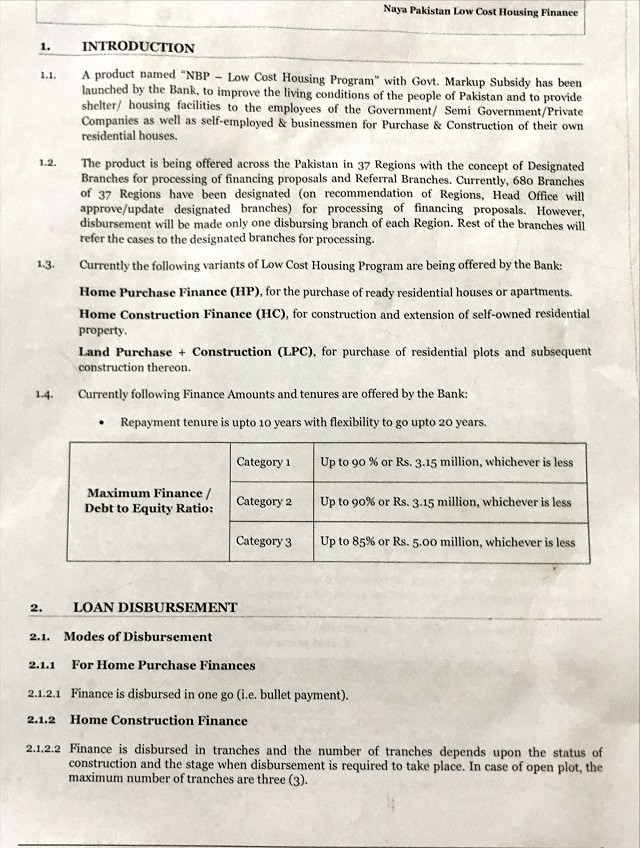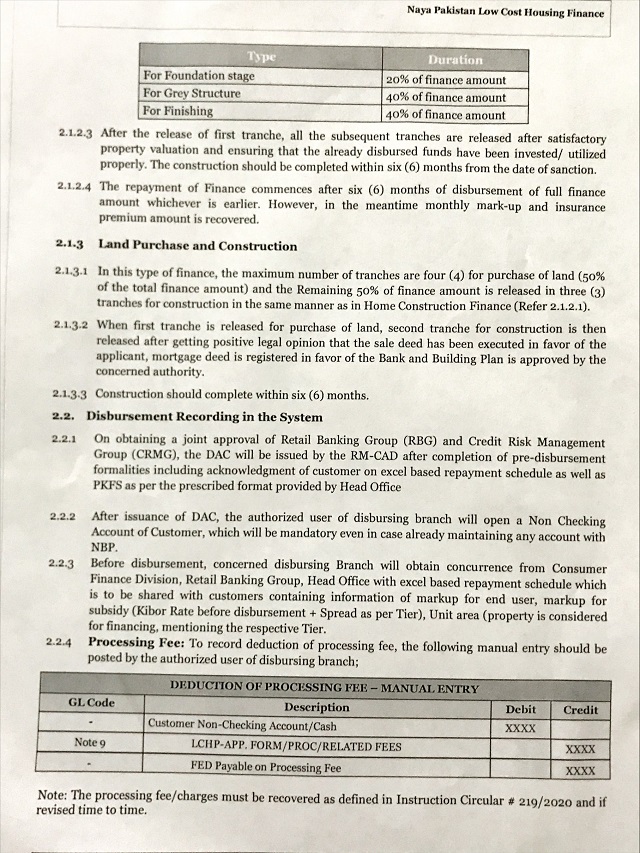Sitting on a charpoy rested by the roadside, sewing her three-year-old daughter’s frock, is Rahima, whose humble abode is a patch of land under the Nazimabad Flyover. Rahima, who doesn't even remember her exact age, has been cooped up in here, with her husband and two daughters since 2010. However, she is not the only resident of this peculiar colony. Her neighbours comprise some 40 families who had once moved to Karachi in quest of building a better life, after losing their homes to floods in rural Sindh.

PHOTO: YUSRA SALIM
The mammoth flyover that acts as a shelter for those who dwell underneath crosses over the Nazimabad Eid Gah and the adjacent underpass, functioning as one of the city’s chief arteries.
“It was not as if all the 40 families came here and settled at the same time. There were only 10 to 15 people here when I first came, and then the number kept increasing with the years,” Rahima said.
A rural-to-urban migrant, Rahima, grew up imagining the megacity as a land of infinite opportunity. That very belief fueled her move to the city some 10 years ago. “Since childhood, I would always see people moving to Karachi and making a better life for themselves and their family. Yet I have been living by the roadside ever since I came here because I have nowhere else to go,” she lamented. Asked if she had ever thought of returning, she revealed that her entire village washed away in floods not too long ago.
For Rahima and her neighbours, life under the flyover, after many years of dwelling, has taken the shape of a permanent abode. It appears as small colony — if one ever affords it the status — with a culture of its own, built around the collective need for sustenance. The government had once erected iron grills to keep the homeless at bay. Today, the same grills, lined with vibrantly coloured scarves, act as cradles in which swing the newborns of the flyover’s squatters. Not too far from there, the women of the colony can be seen making bread, sewing clothes or lounging under the soft winter sun, while their children bathe and mischief by the roadside.

PHOTO: YUSRA SALIM
“Most of us are not relatives but over all these years, we have all developed a familial bond with each other. We share food, money and everything else like one household,” said Basheera Bibi, who runs a small candy stall in the vicinity of the flyover. “This mud stove was made by my son. We use it to cook food for everyone, because we can’t afford separate firewood for each family,” she added.
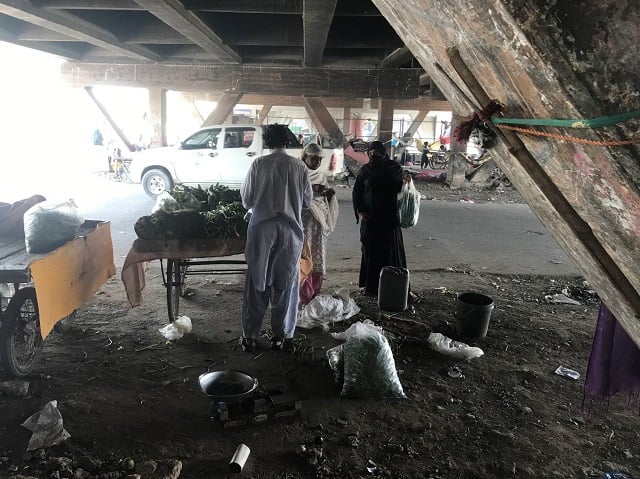
PHOTO: YUSRA SALIM
Gendered hassles
While men living under this flyover utilise restrooms built by the Citizen Police Liaison Committee (CPLC) across the road whenever they wan, the women are not afforded the same luxury. “We get these buckets filled at a nearby petrol station and our children bathe in the open, by the roadside. But we women cannot do the same,” said Rahima covering her face with a black scarf.
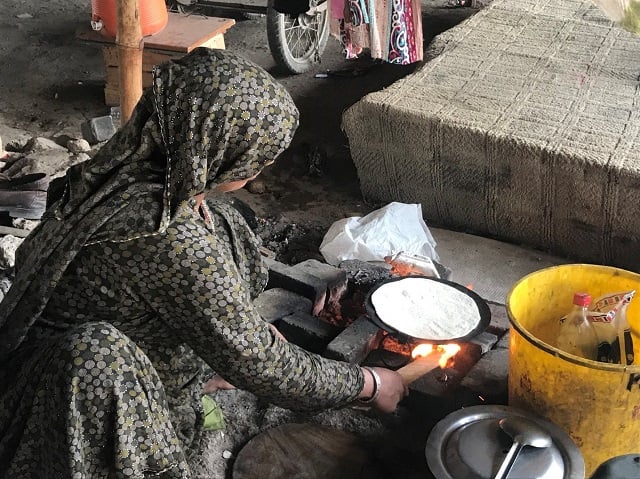
PHOTO: YUSRA SALIM
Women usually only access the CPLC restrooms once a day and pay extra to the restroom workers to let them have a bath once a month. Many women have also given birth under the same roof in the open air. “It is not easy to go through all this here but there is no other option for us. It is a blessing that women here stand for each other and help anyway they can but given the condition we face, what else can we do?” commented Shahida, who witnessed her sister die, while giving birth in the open.
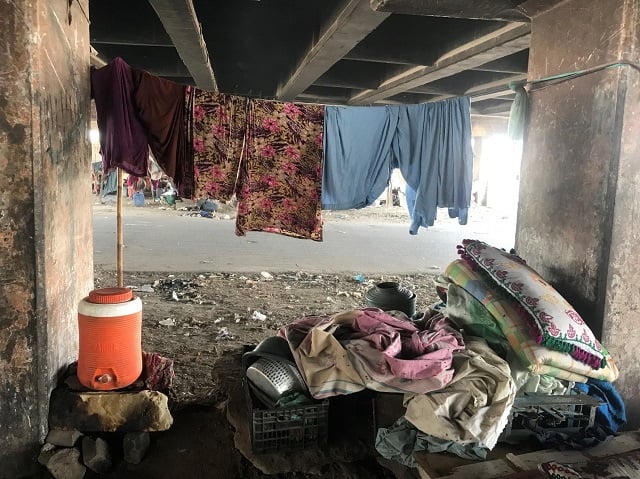
PHOTO: YUSRA SALIM
Barely getting by
Most men in the area work close to the flyover. Many sell vegetables in the neighbouring colonies on a pushcart, while a few have set up stalls by the side of the U-turn of the flyover itself. “Selling these vegetables hardly makes a livable income. By the day’s end, when we go home, our women scrape the cart for any leftovers and that’s what makes for food,” said Muhammad Naveed, who sells vegetables in the area. “The police and local government officials pester us for bribes every day. Sometimes we give what we can, other times the money doesn’t work. So we often go away for a few weeks, leaving behind all our clothes, quilts, beds and utensils. In the meanwhile, we set up our carts nearby to watch over our belongings and also to watch for an opportunity to squat again,” said another resident of the flyover settlement.
Addressing the issue, Senior Superintendent of Police (SSP) Centeral Ghulam Murtuza Tabassum, said that law enforcers are often drawn as tyrants for simply doing their job of protecting the public and public property. “We take action every five six months, but the squatters keep coming back. Often, spilling out on the streets, blocking roads and obstructing flow of traffic. It becomes hard for us to manage, but if we take action against their men for that, we’ll only be seen as evil,” he commented.
Recent times have seen an unusual growth in crime rate in the Nazimabad and surrounding neighbourhoods. A majority of area residents pin the blame for increase in crime rate on the homeless settlers, which the local police too seems to believe.
Seema Khan, a resident of the Nazimabad area, feels that the advent of the flyover settlers has damaged the reputation of her neighborhood, which was once considered one of the city’s poshest areas. “Every time I drive by, now all I see are naked children and women breastfeeding on the footpaths. There is crime and litter and the government has made Nazimabad worse than a village and yet we pay thousands in taxes,” she complained.
Laal Din, a settler who had exhausted his savings to buy a secondhand motorcycle, said that he was profiled and picked up by the police just a few days after his purchase. “They assumed I’d stolen the vehicle, and immediately took me in for investigations. Gladly, I had all the documents as well as the sales receipt from my purchase, upon showing which they eventually let me go,” he recalled.
The police on the other hand maintain that all their actions are based on public complaints, which are frequently launched against the flyover settlers for criminal activities. “Area residents are always after us to remove the settlers, who they say have built a whole Katchi Abadi, under the flyover. But since there are women and children housed under the flyover too, there’s not much we can do,” said SSP Tabassum. “Sometimes families even shift to the nearby markets, the police arrests them according to the Gadagari Act and presents hem in court. But the court too just releases them as they are poor and beggars mostly,” he added.
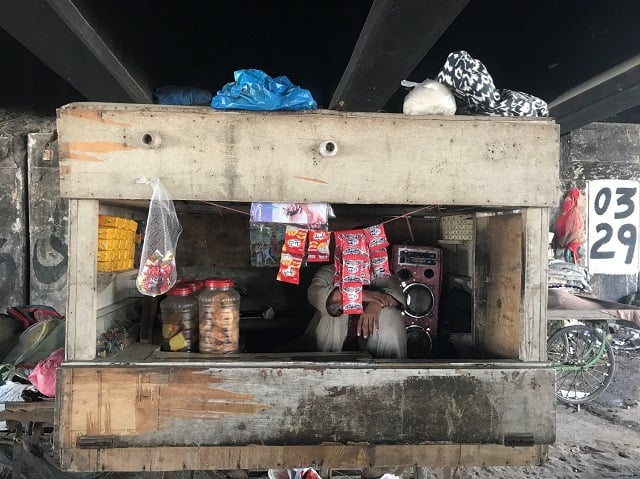
PHOTO: YUSRA SALIM
Models for uplift
While discussing a probable solution to the growing issue of homelessness and squatter settlements in the city, architect and urban planner Arif Hasan pointed towards to two existing models, which could be worked upon: Khuda Ki Basti, an experimental low-income housing scheme that has already produced promising results, and the Orangi Pilot Project. “Government when providing land to such people, also needs to regularise and upgrade the system to actually help them,” he said, drawing inspiration from the two projects.
According to Hasan, people on the grassroots level need to be assured that they are going to get the land, build their homes and soon settle on it too. “However, 99 per cent of the time, people are not even aware of the plan being devised for them. Any such scheme, be it low-cost or Naya Pakistan is futile and serve no benefit to those they are supposedly chalked out for. Instead, they only serve to fill the pockets of the rich and privileged,” he lamented.
One example that holds true to Hasan’s critique is the low-cost housing introduced by the State Bank of Pakistan. Costing between Rs25,000 to Rs30,000 a month, the scheme has largely stayed beyond the reach of the urban poor, who barely make enough a month. Rather, it is the middle and upper class sections that have benefitted from the project.
Speaking in the regard, Urban Planner and Researcher Muhammad Tauheed highlighted that the major issue which such government schemes is the dearth of data on the urban poor living in various squatter settlements across the country. “There is dire need for research in order to identify the target recipients of these schemes and projects. If we don’t have numbers to back the plans, no scheme is good enough,” shared Tauheed, who is also associated with Karachi Urban Lab, set up at the Institute of Business Administration.
The second major problem, per Tauheed, is the extant gap in documentation among the urban poor, a majority of whom do not have a Computerised National Identity Card. Owing to which, they continue to remain unaccounted for, in any scheme developed by the government.
Offering an alternative, Tauheed said that the government should start listing such families in every union council, and assign them registration numbers, which can later be traced at time of allocating lands and housing schemes to settle on. “If this still remains out of government capacity, they should consider reaching out to NGOs, which usually have research and data. Because without data, these schemes are just words on paper and mean nothing to the poor,” he added.
Addressing the Pakistan Tehreek e Insaf (PTI) government’s Naya Pakistan Housing Scheme, Tauheed said that it too is riddled with loopholes, which they are yet studying. “The scheme was introduced to help poor people build homes but the capacity to buy a house in this scheme is minimum three million rupees, which the intended audience cannot pay for,” the researcher told.
However, another issue that often surfaces at time of allocating land to the urban poor is the misuse of property by the allottees. More often than not, they would sell or rent the allotted space and go back to form a new squatter settlement in the city. The most prominent example of this is the Taiser Town Scheme 45, which was meant to be populated by those displaced by the Lyari Expressway Project.
“A bulk of families who were allotted land here either left or never came. The issue is that the government, when it does think resettlement, remains limited to allotment and relocation. But there is seldom any thought spared to rehabilitation. Being moved to far-flung areas with no water, electricity, gas or transport is not sustainable, so people have little choice but to go back. Which is why the government needs to think all aspects through and ground their schemes on solid research and data for them to be actually beneficial,” Tauheed told The Express Tribune.
